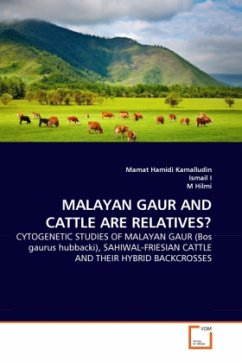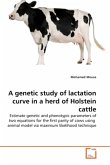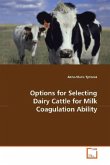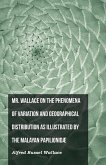The gaur and cattle has chromosome complements of 2n = 56 and 2n = 60, respectively. Two types of chromosomal arrangements of the backcrosses were observed; namely an intermediate to the parental species (2n = 58) and a cattle type (2n = 60). The backcrosses with 2n = 60 shared similar chromosomal arrangement and banding characteristics of the cattle. A comparison of the gaur with cattle, as the model of the ancestors of the modern bovids, showed structural and characteristic differences in their karyotypes. The gaur exhibited two pairs of submetacentric chromosomes and lacked two chromosome pairs, which had resulted from Robertsonian translocations during their karyotype evolution. Banded karyotypes revealed extensive similarities of chromosomes 1 and 2 of the Malayan gaur to the homologous acrocentric chromosomes of cattle. For the first time, chromosome 1 of the gaur was identified to contain an ancient origin inverted segment compared to cattle, which was homozygous in all the studied gaur samples. The intensity of the C-bands on chromosomes 1 and 2 suggested that the translocations occurred at different periods of time during the karyotype evolution.








